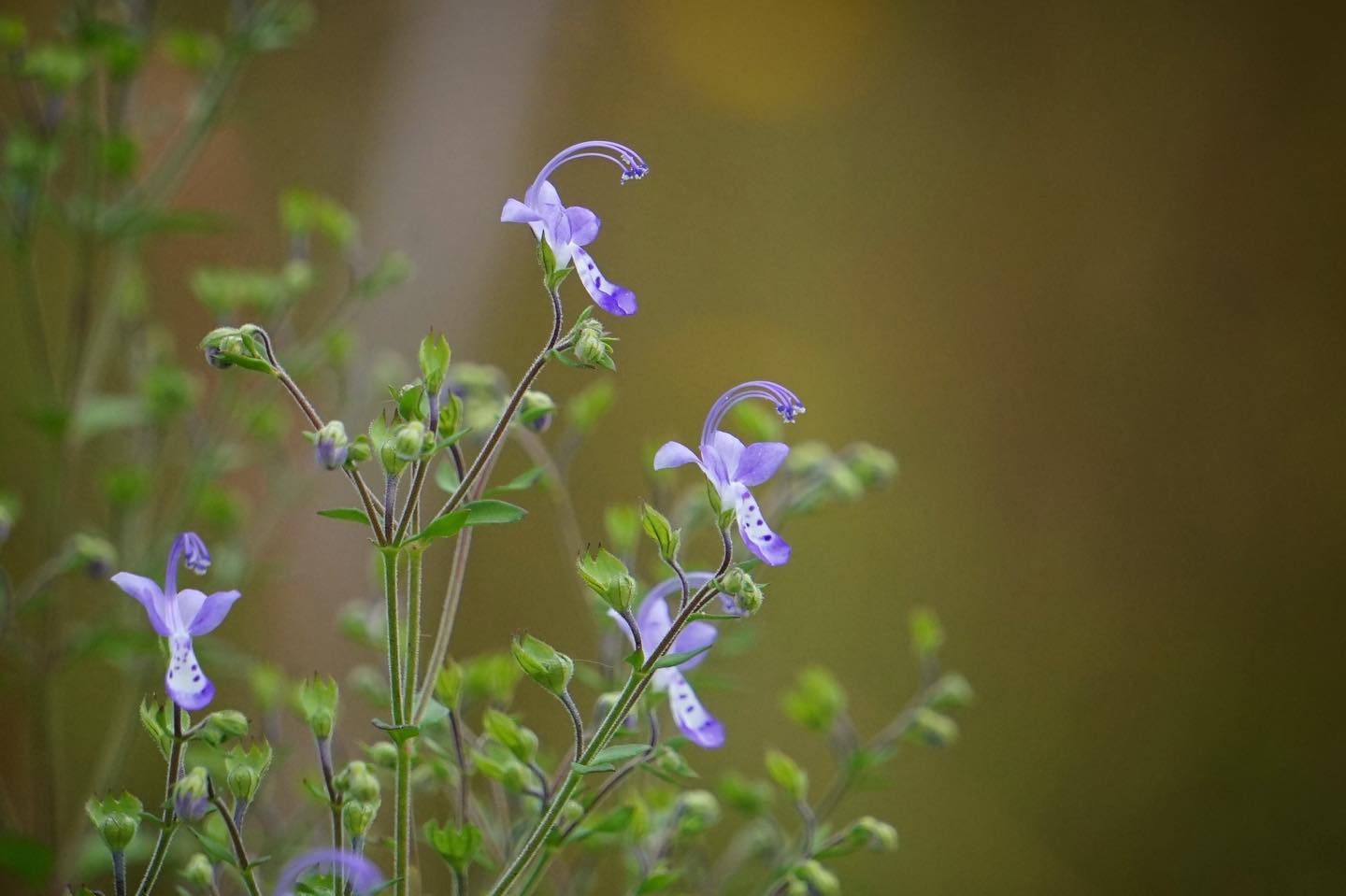Seven new Trichostema species identified in Florida
Forked bluecurls (Trichostema dichotomum) are a wonderful addition to native plant gardens across Florida. This easy to grow annual readily reseeds from year to year and supports many pollinators —especially native bees. In the wild, the genus Trichostema (Lamiaceae or Mint Family) is endemic to North America with a high amount of diversity found within the Southeastern Coastal Plain. Despite many well-documented morphological differences among plant populations, this genus has been traditionally split into only four species, three of which are present in Florida: T. dichotomum, T. setaceum and T. suffrutescens*. Only a lack of dedicated research has prevented the further classification of this genus that botanists have long believed warranted — until now!
New discoveries
Recently, Dr. Kevan Schoonover McClelland, Elon University, Dr. Alan Weakley, University of North Carolina-Chapel Hill, and graduate student Derick Poindexter, University of Carolina-Chapel Hill, published research in the journal Phytotaxa establishing seven new species of Trichostema, five of which are endemic to Florida! They discovered that the long-documented morphological distinctiveness among populations was mirrored by genetic distinctiveness, justifying the naming of new species. These new species were further supported by ecological and geographical differences among plant populations. The work to establish this speciation included extensive field research, review of herbarium specimens, and nextRAD genomic sequencing.
Why is Florida such a hotspot for Trichostema diversity?
The answer to this question lies in our geography. Trichostema species thrive in xeric landscapes, which can be found throughout the state. Due to millions of years of dynamic shifts in water levels, Florida has a series of xeric sandhill ridges that were isolated over time, allowing for distinct species to emerge. A similar pattern can be seen with another genus in the mint family, Dicerandra.
Let’s meet Florida’s fabulous Bluecurls!
This exciting new research brings the number of Trichostema species in Florida up from just three to 10, with five of those endemic to Florida. A key to these classifications can be found online in the Flora of the Southeastern United States, but here is a brief introduction to each! All photos courtesy of Dr. Dr. Kevan Schoonover McClelland.
Bridges’ and Orzell’s bluecurls (Trichostema bridgesii-orzellii) – ENDEMIC
Found in Central Florida, this species inhabits the scrub, sandhills and dry flatwoods of the Lake Wales, Bombing Range and Haven ridges.
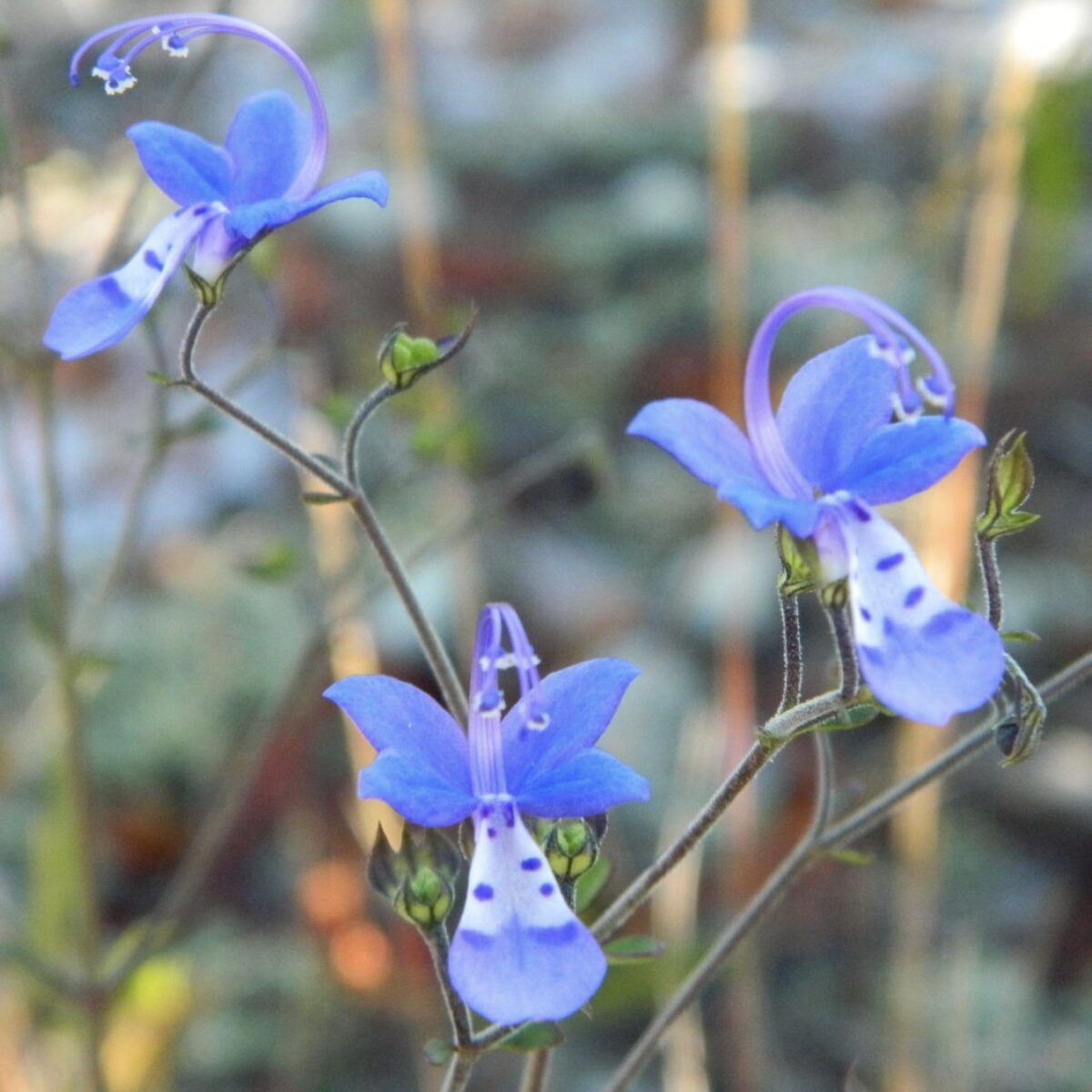
corolla dark blue or blue-purple to blue or blue-purple; anthers dark blue or blue-purple to blue or blue-purple.
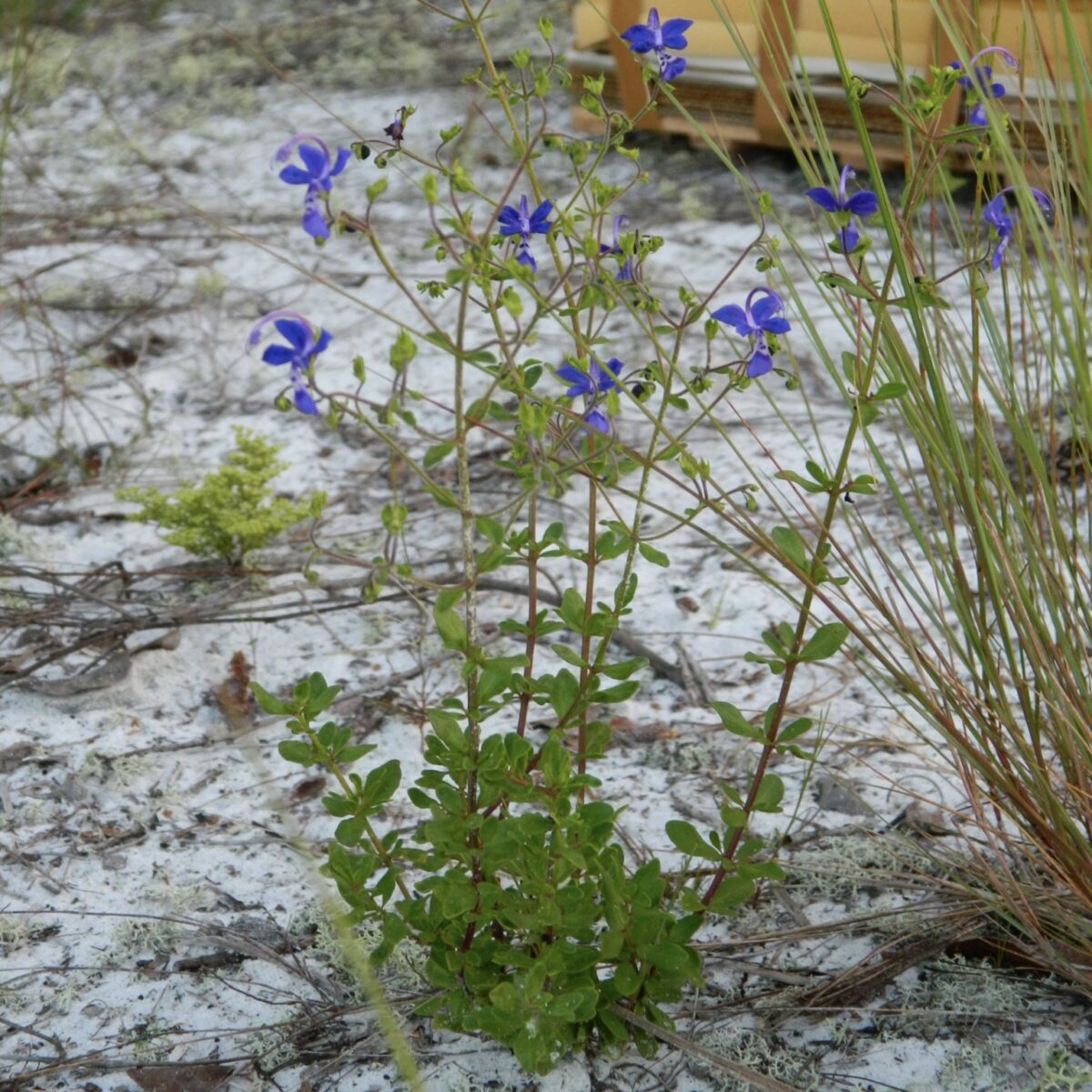
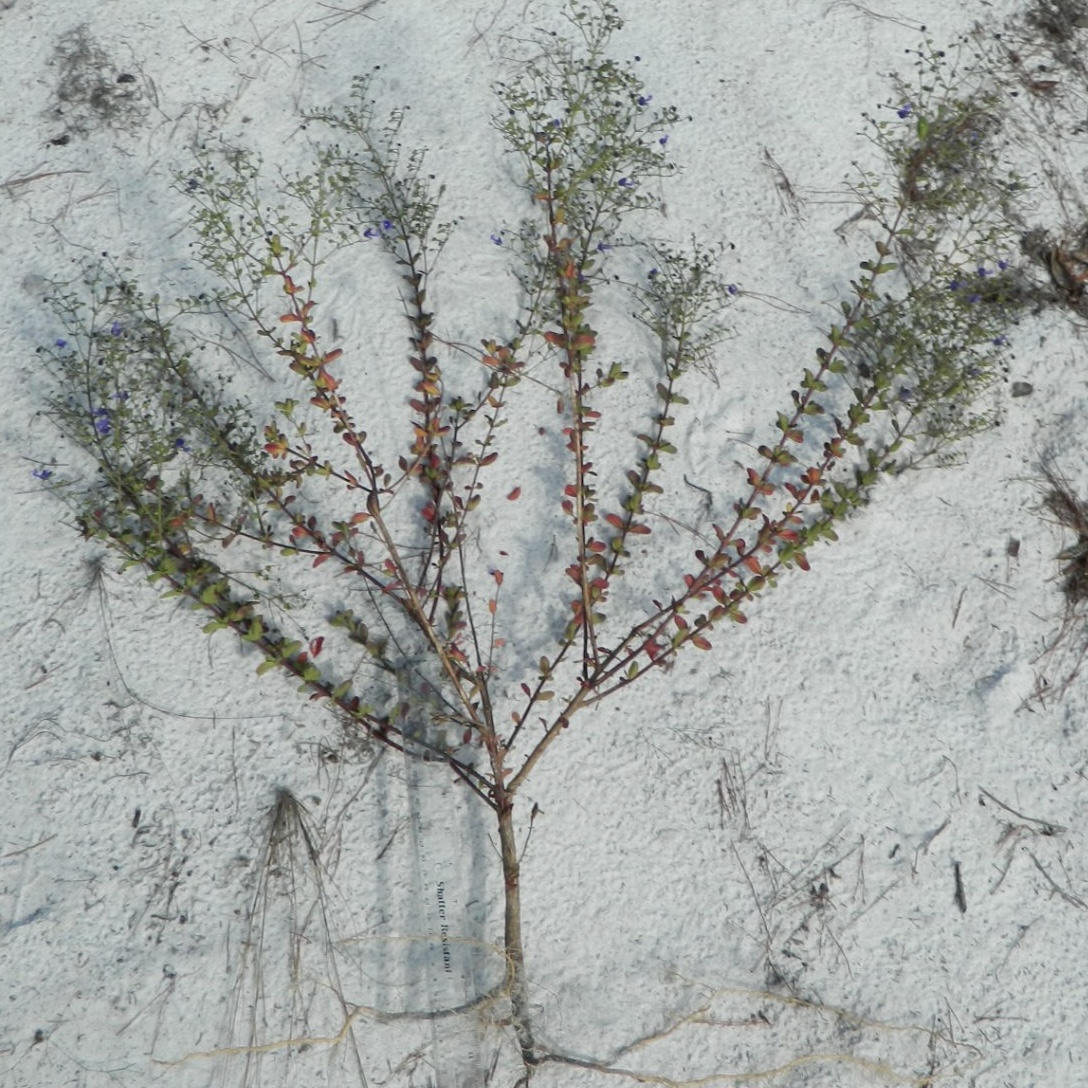
Forked bluecurls (Trichostema dichotomum)
Found throughout the eastern United States and into Canada, this widespread species inhabits dry pine flatwoods, sandhills and disturbed sites.
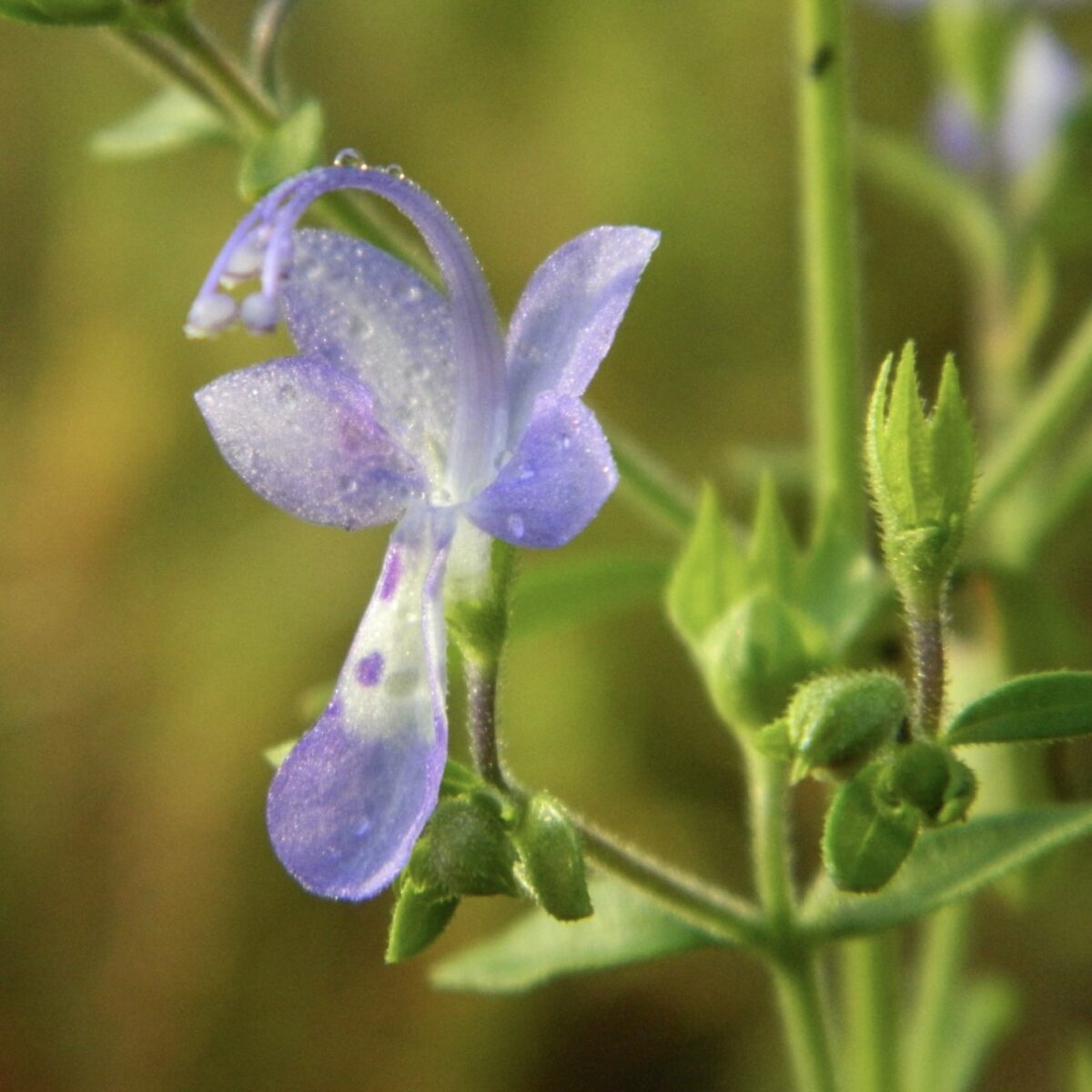
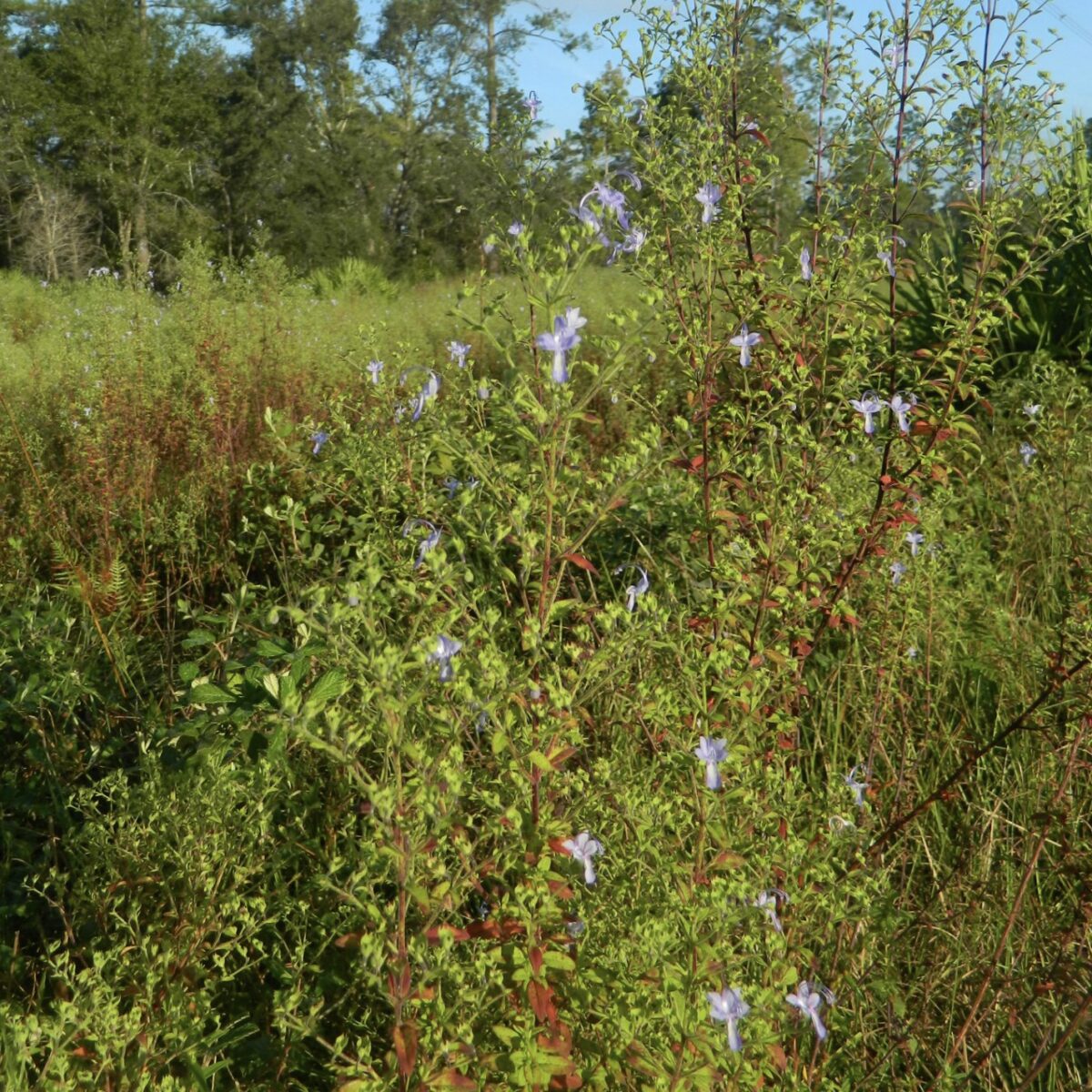
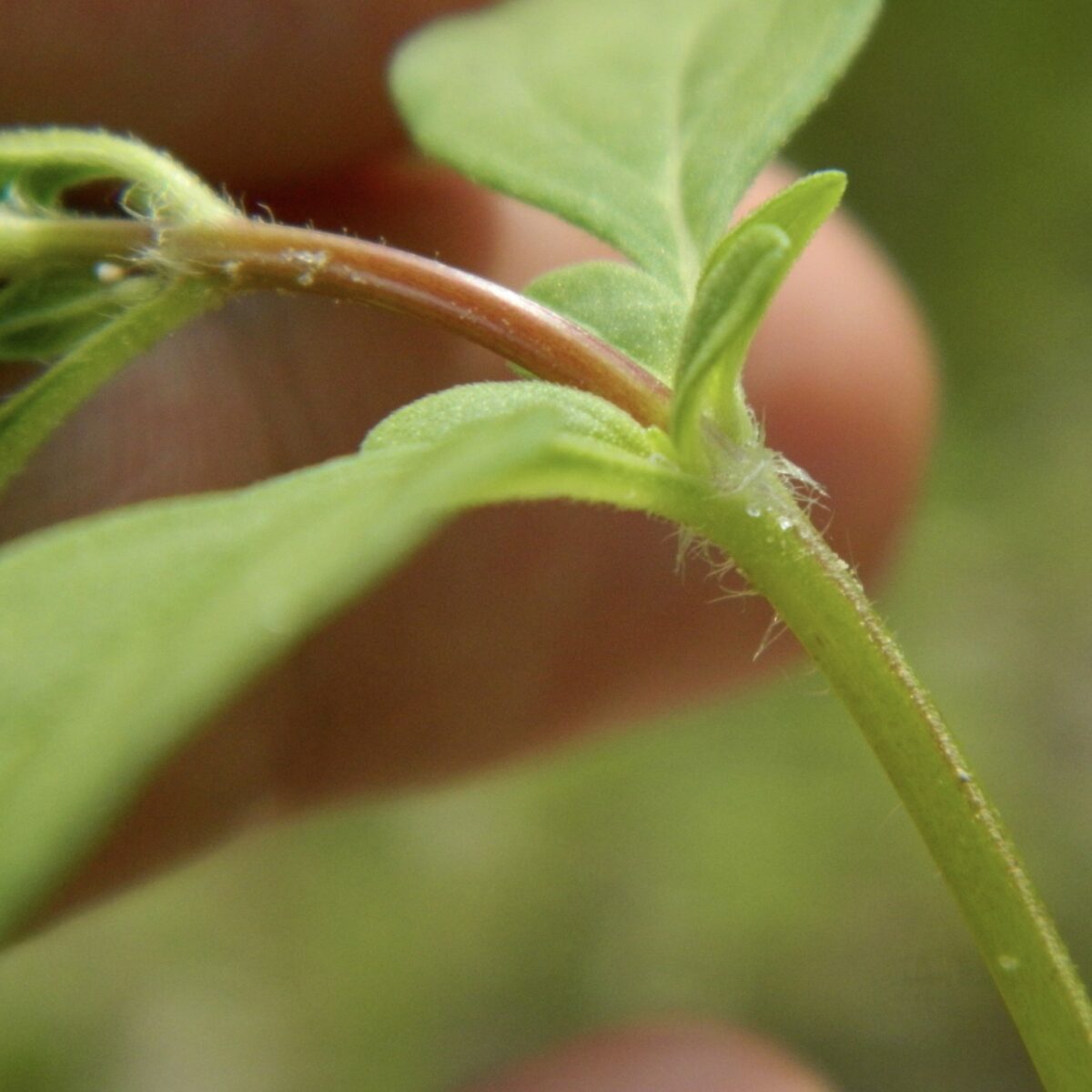
Florida bluecurls (Trichostema floridanum)
Nearly endemic, this species is found along the coastlines of peninsular Florida, with the exception of one population known from the Bahamas. It inhabits maritime hammocks, dunes, grasslands and coastal scrub.
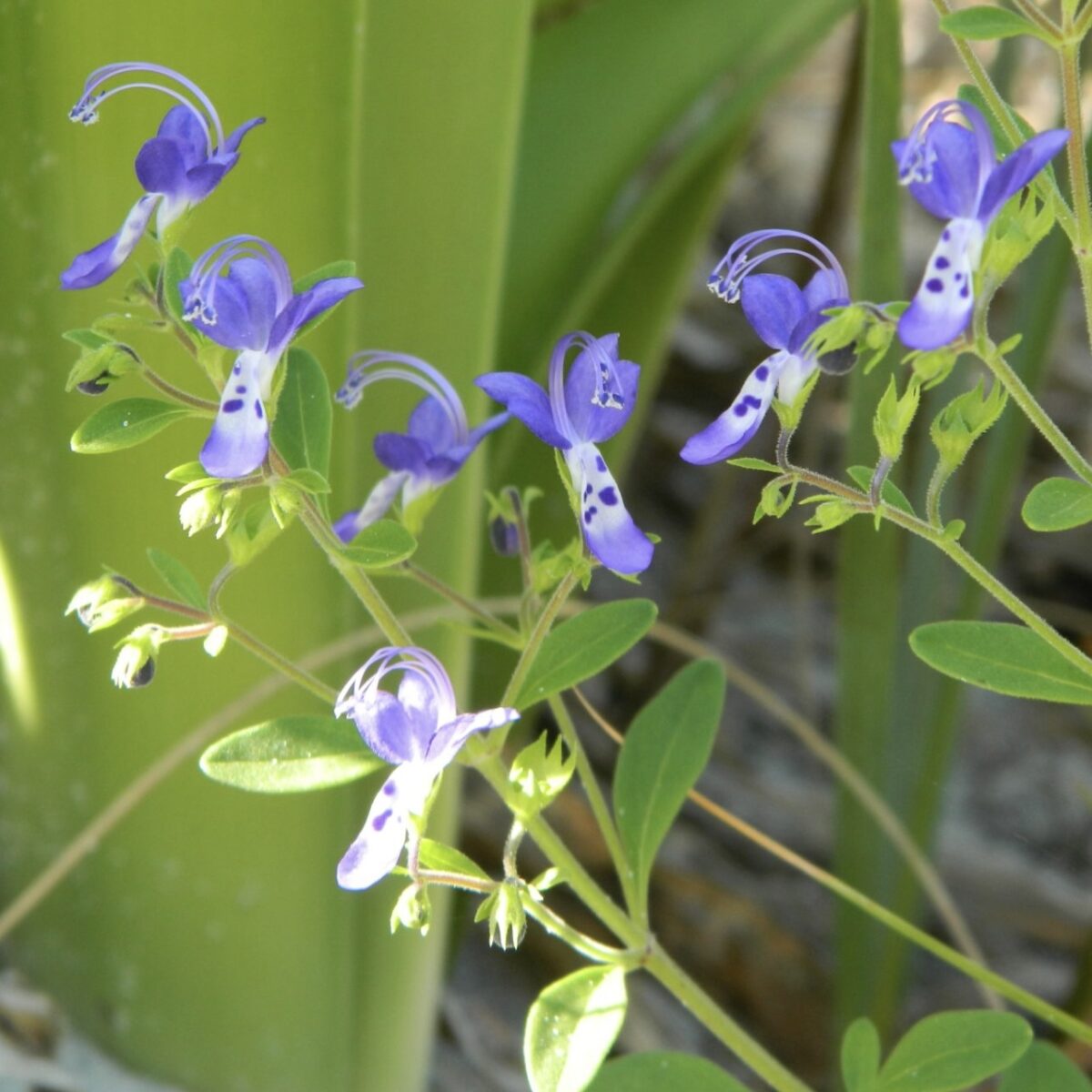
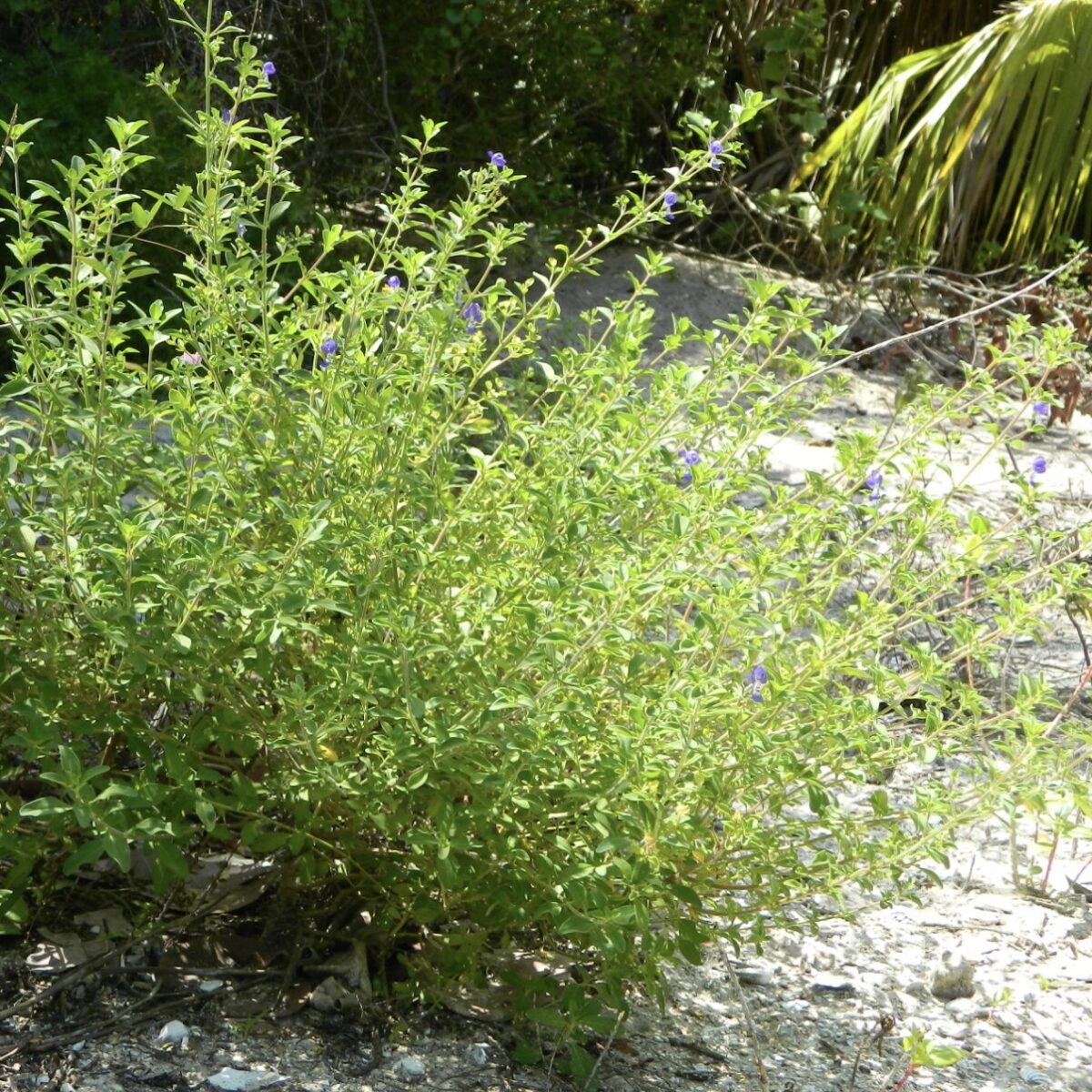
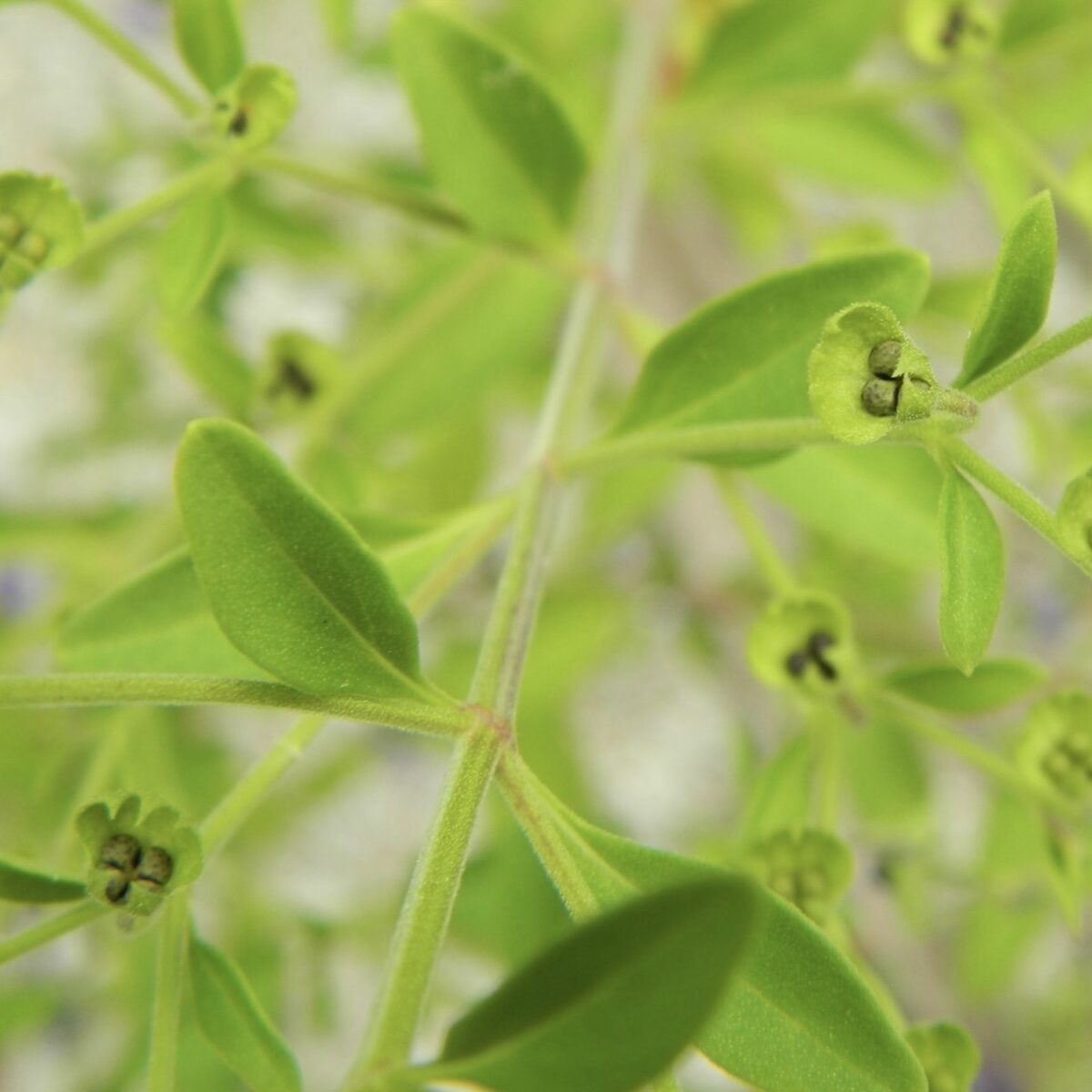
Bushy bluecurls (Trichostema fruticosum)
Found in coastal Mississippi, Alabama and across the Florida Panhandle into Northeast Florida, this species also extends up into Southeast Georgia and down into peninsular Florida. It inhabits the openings of mesic, xeric and maritime hammocks as well as mixed woodlands.
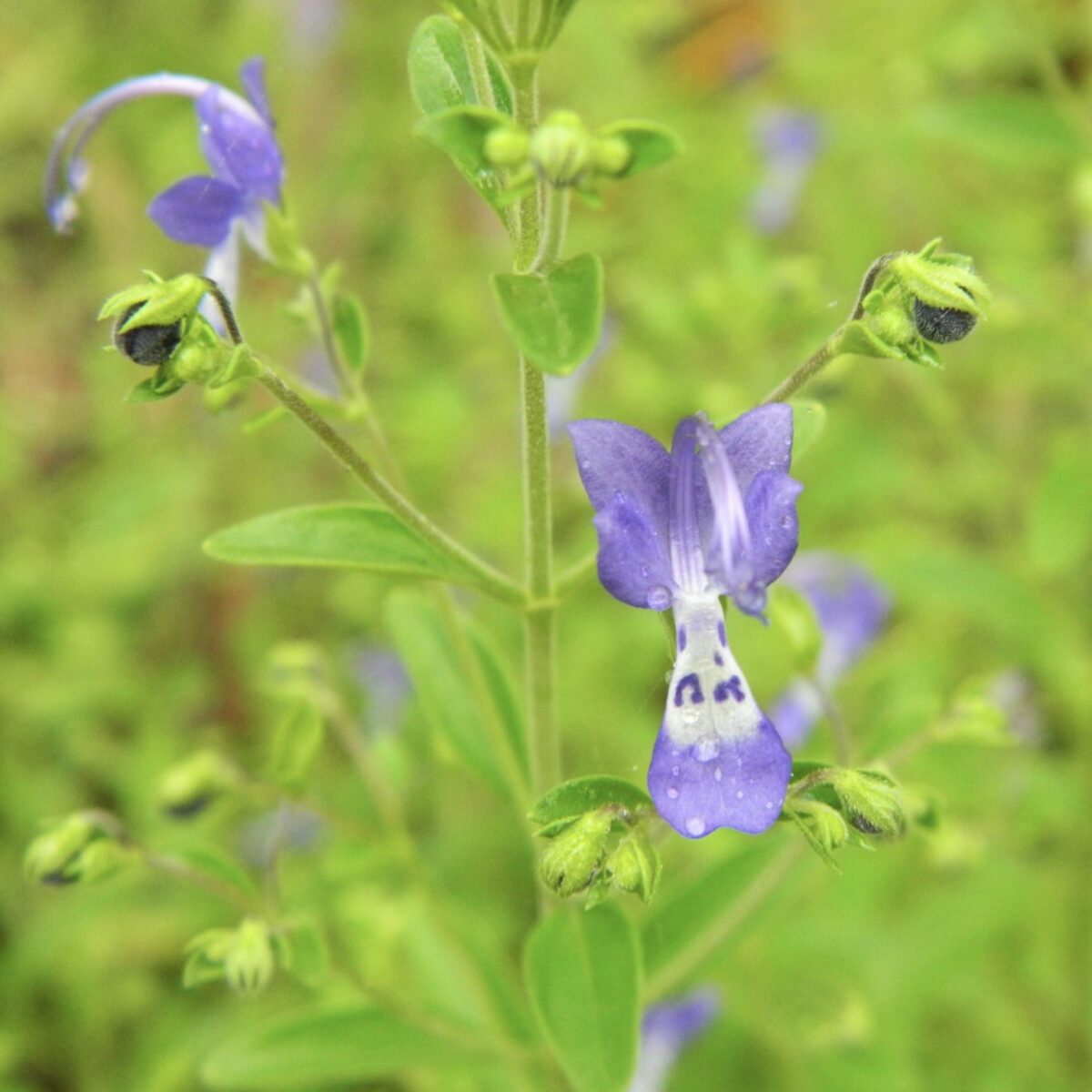
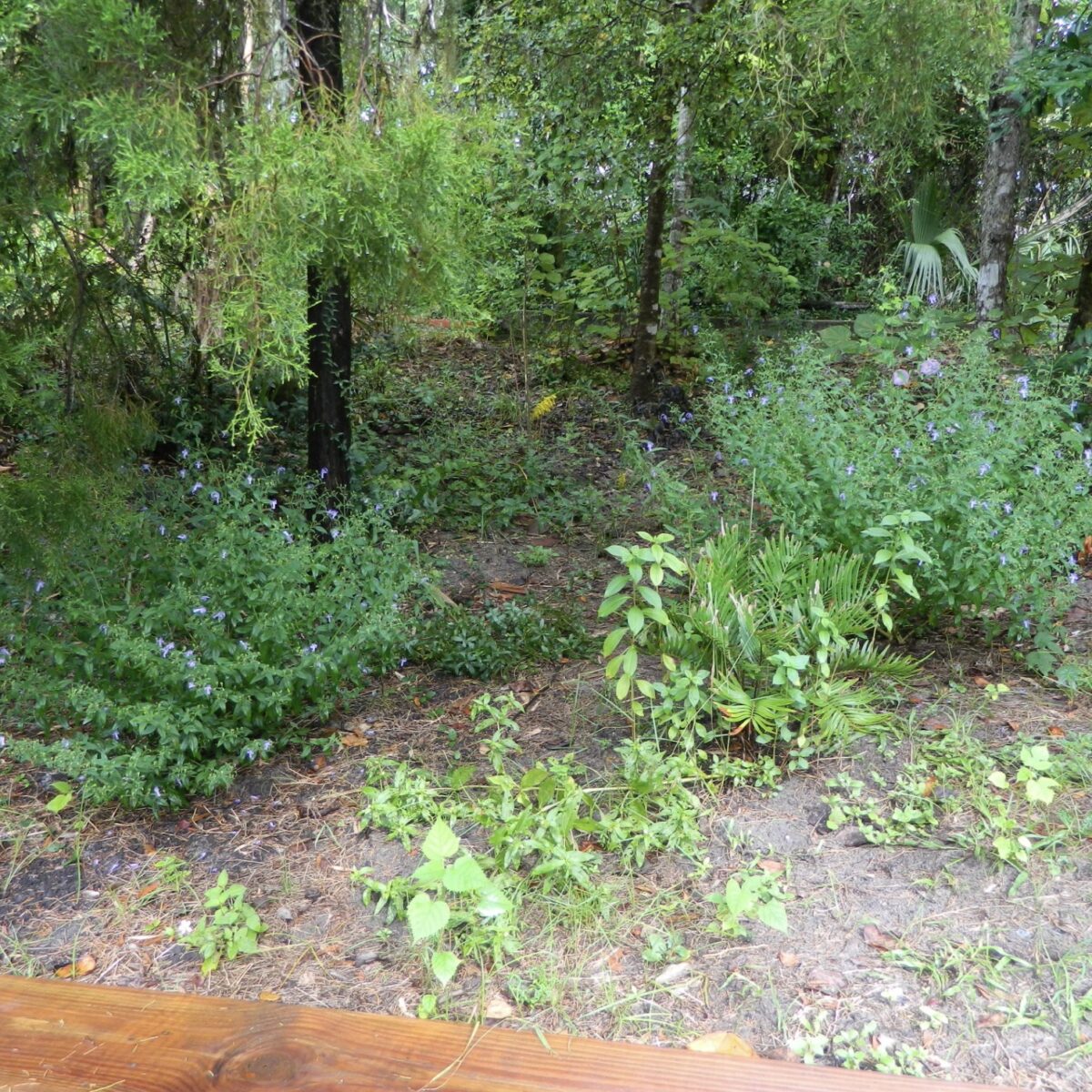
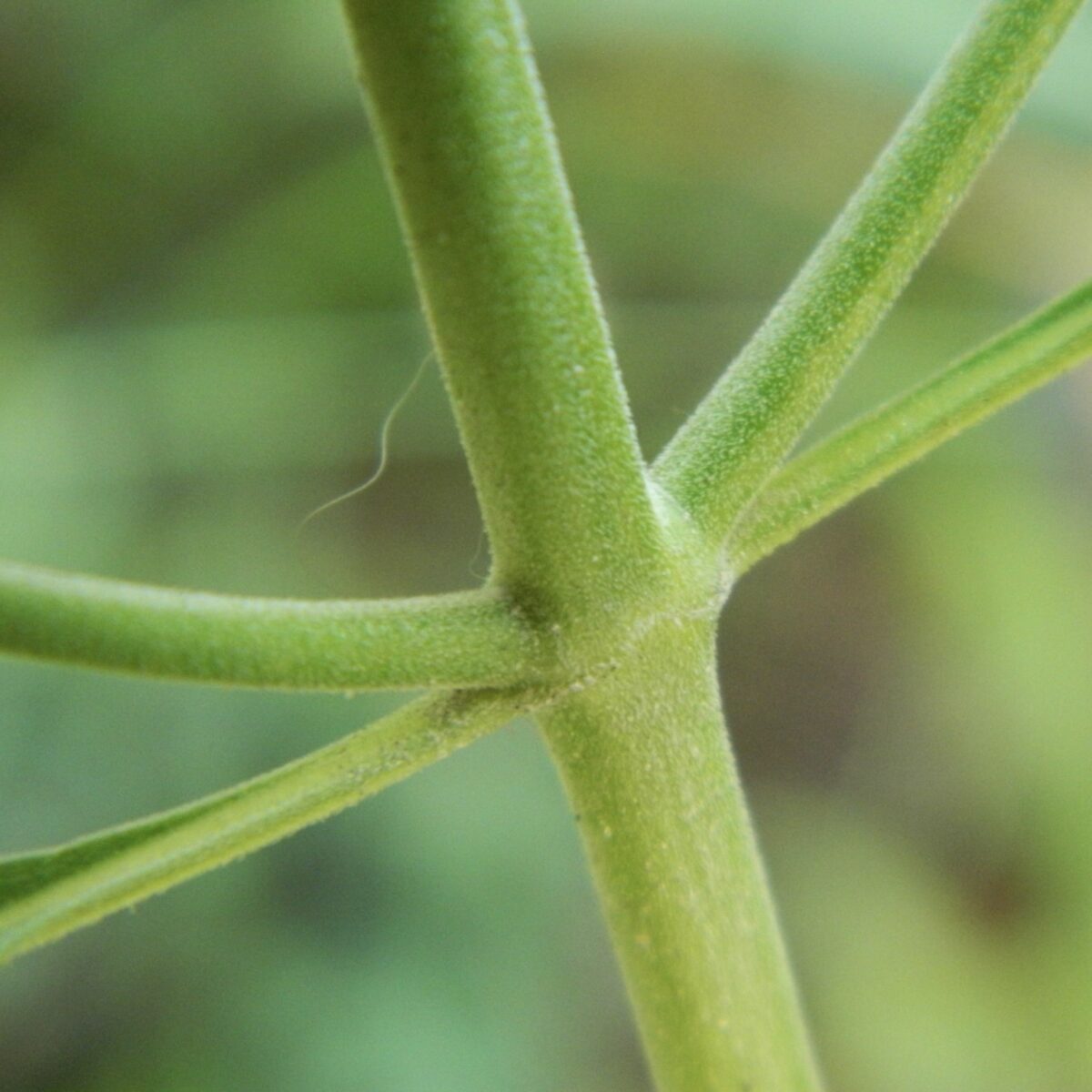
Flatwoods bluecurls (Trichostema gracile) — ENDEMIC
Found in Central to South Florida, this species inhabits mesic to scrubby flatwoods.
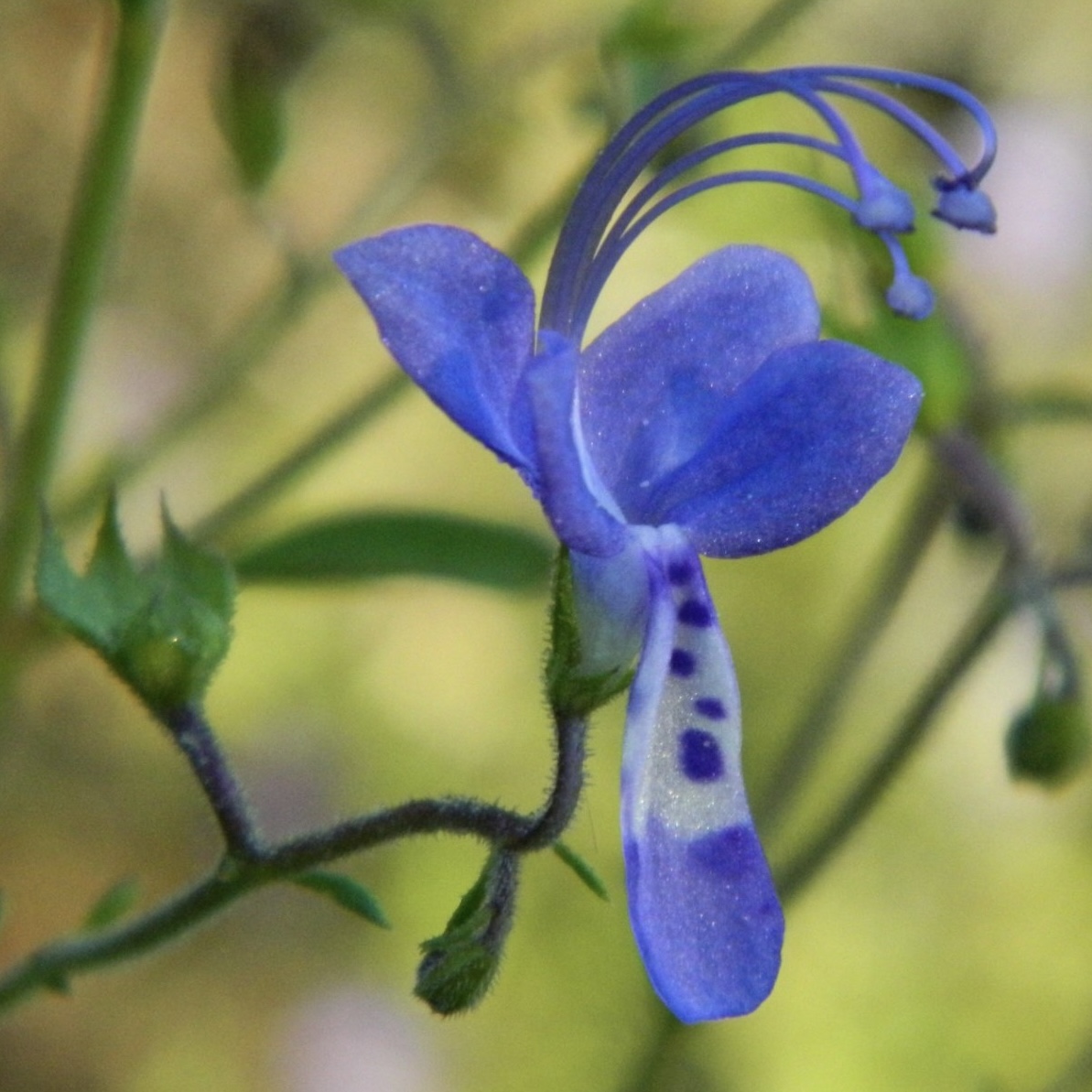
blue or blue-purple.
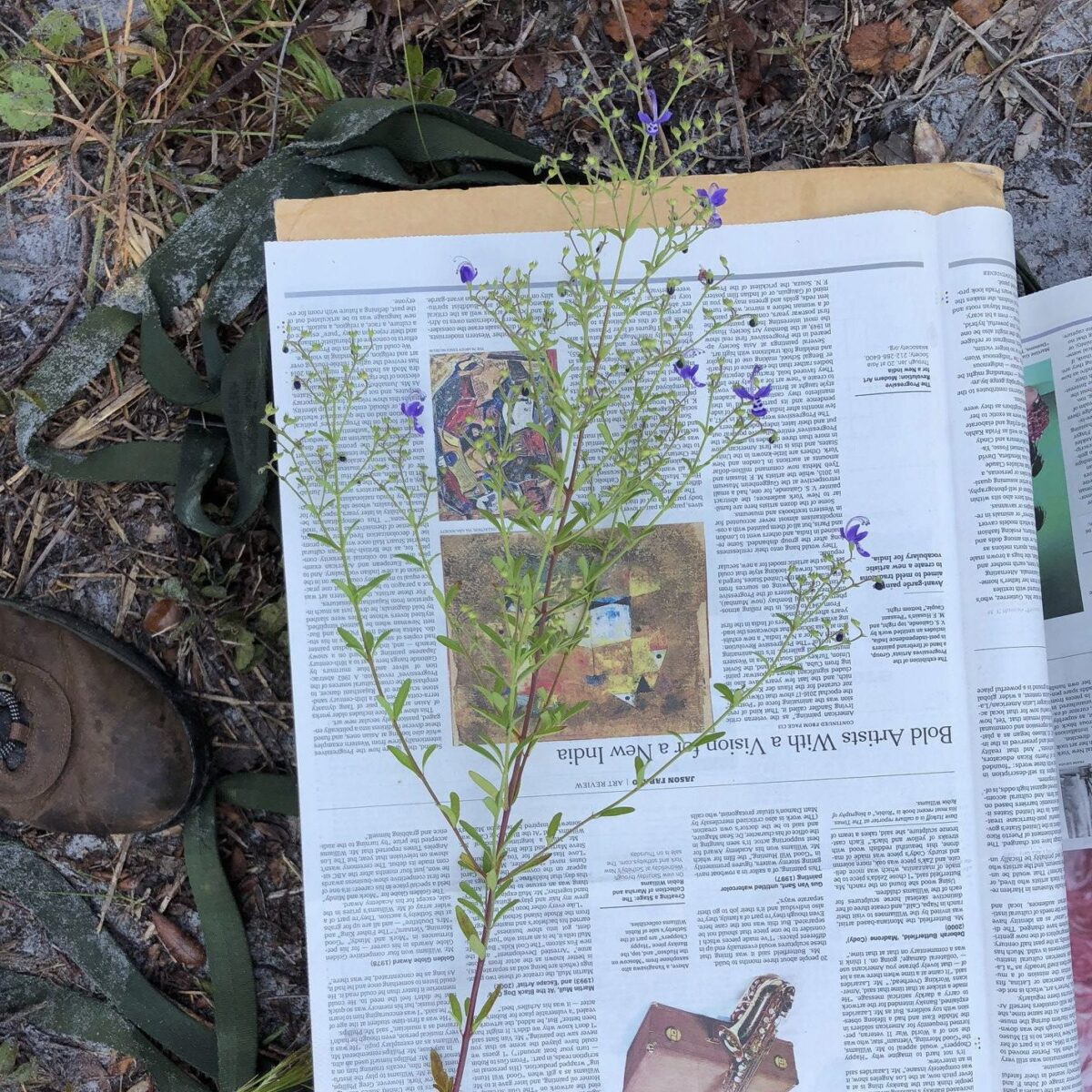
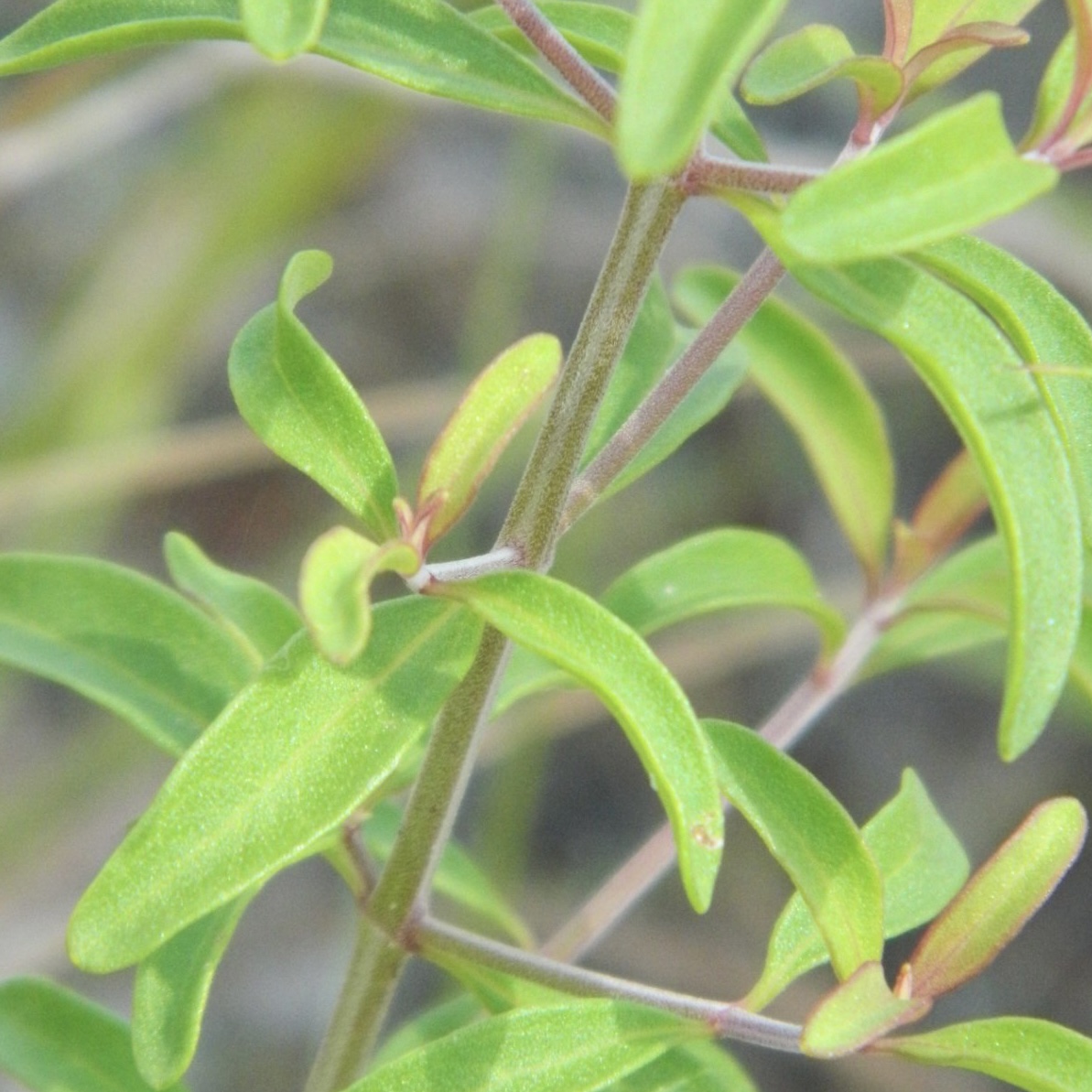
Jobé bluecurls (Trichostema hobe) — ENDEMIC
Found only in Martin County, Florida, this species inhabits scrub habitat.
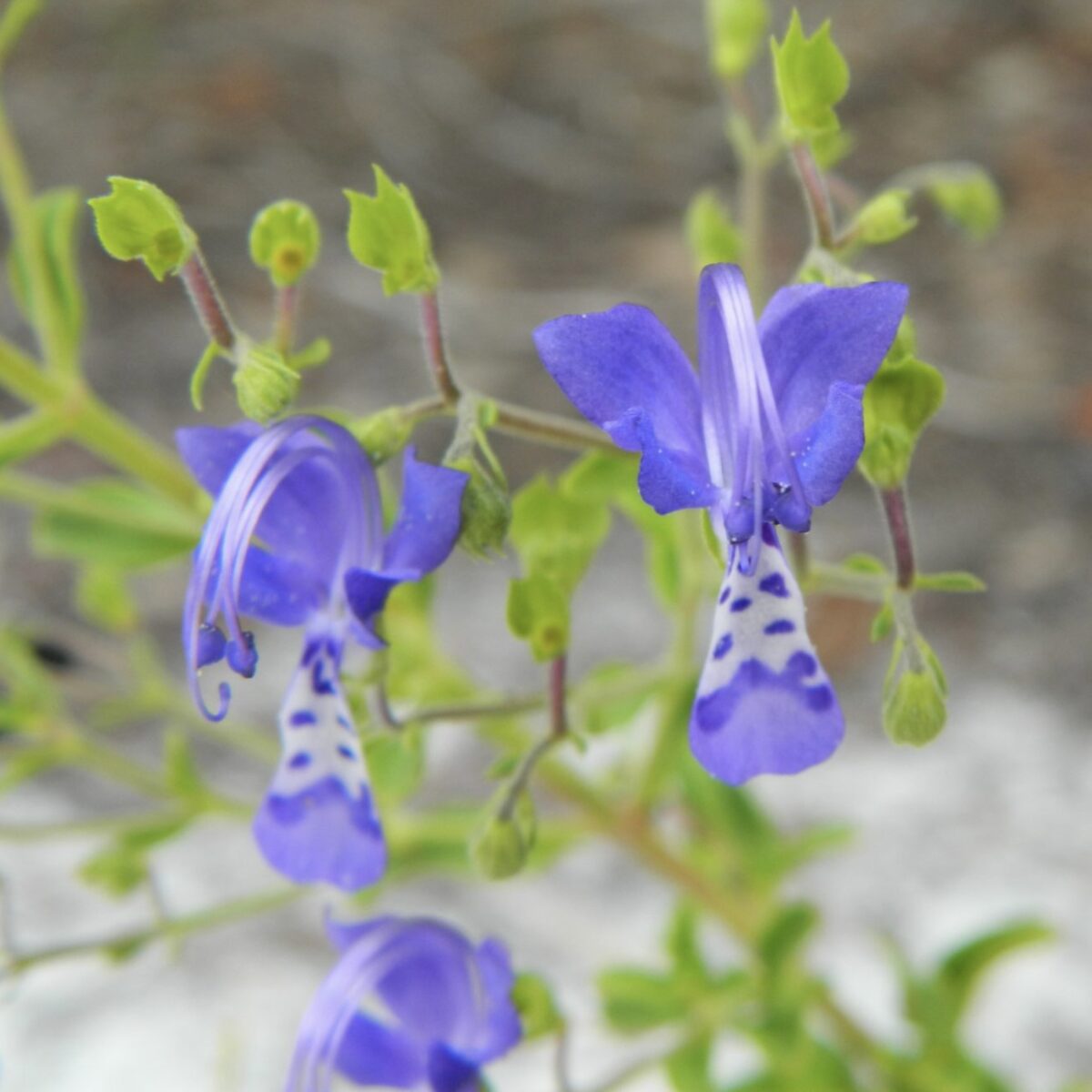
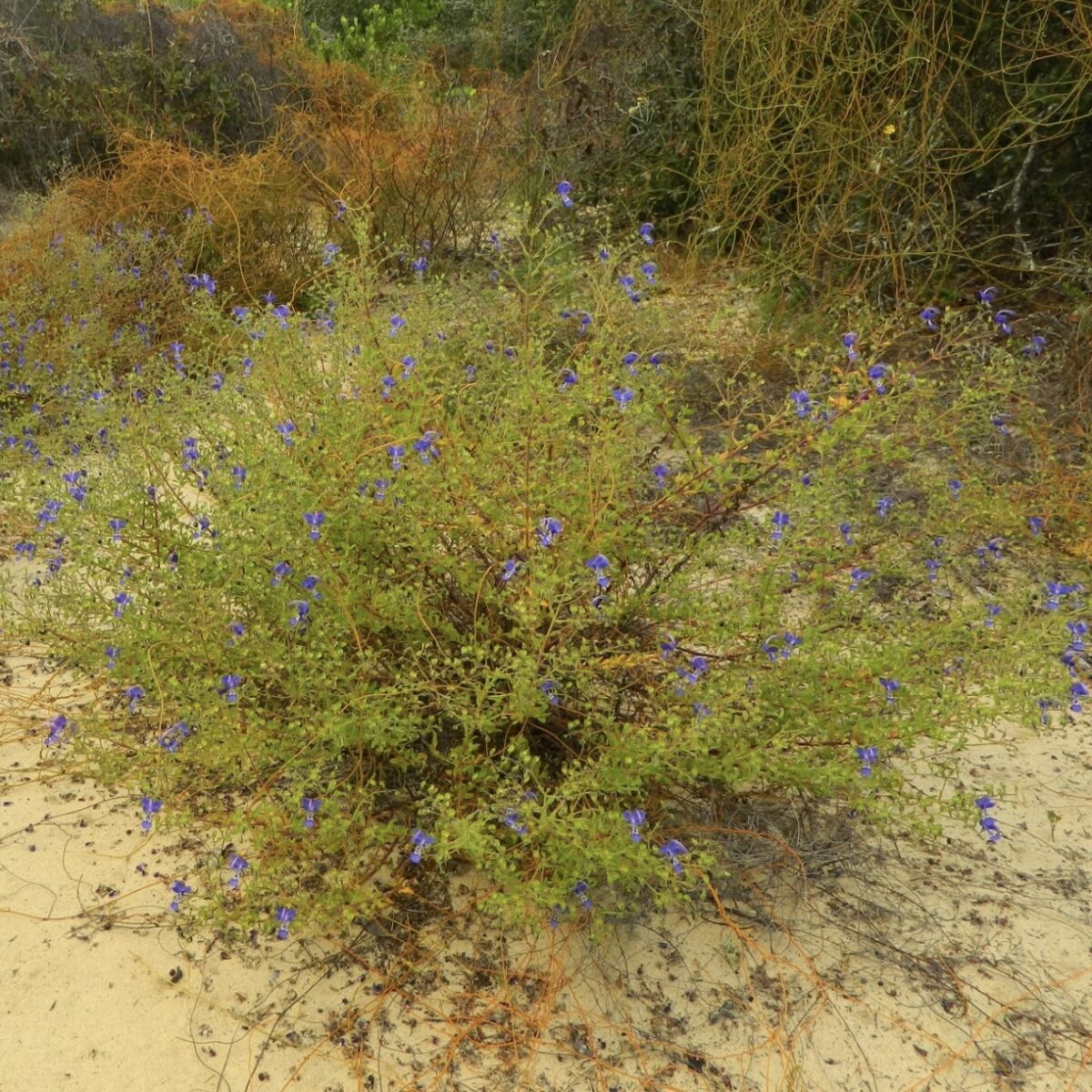
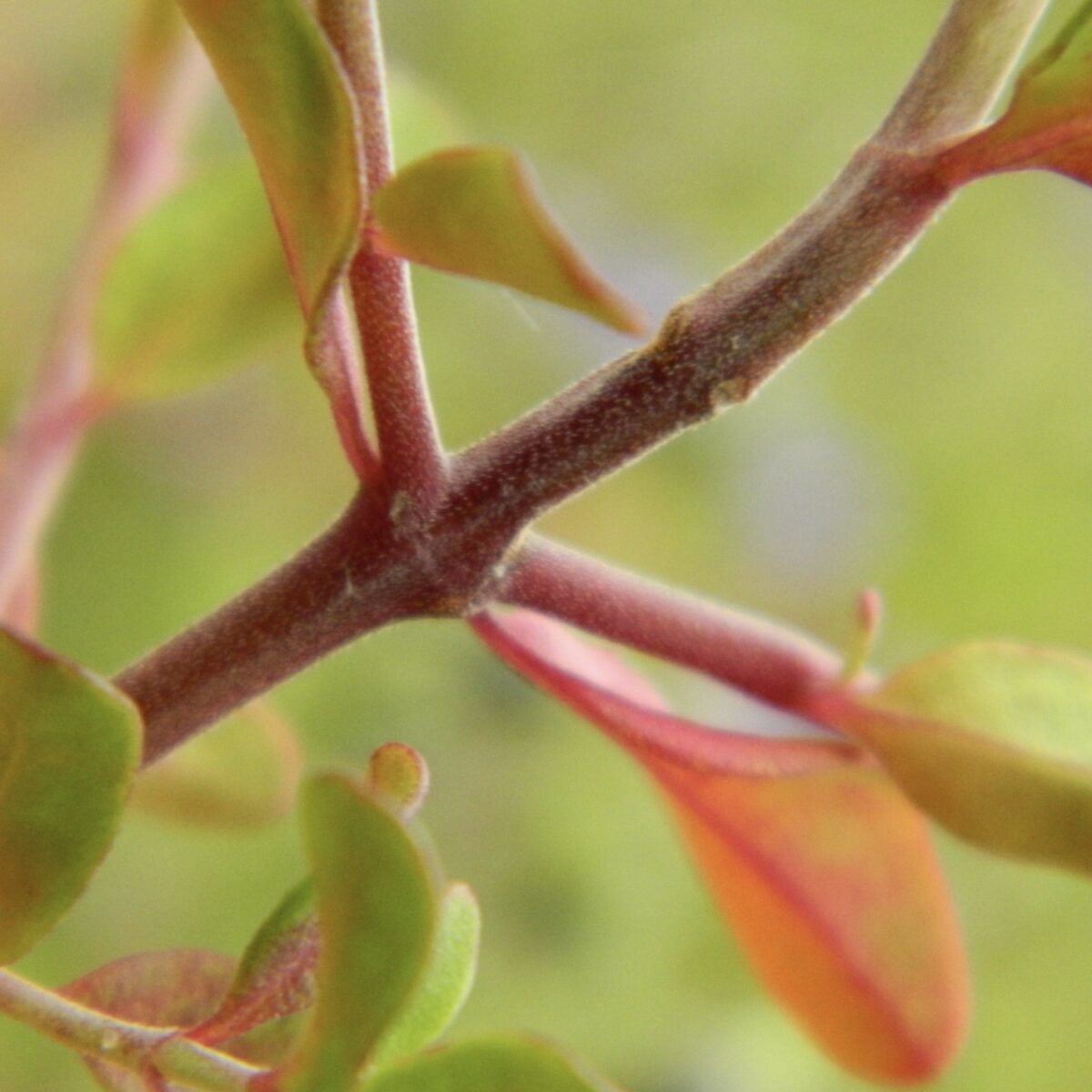
Hidden bluecurls (Trichostema latens) — ENDEMIC
Found only in Franklin County, Florida, this species inhabits scrub and scrubby flatwoods.
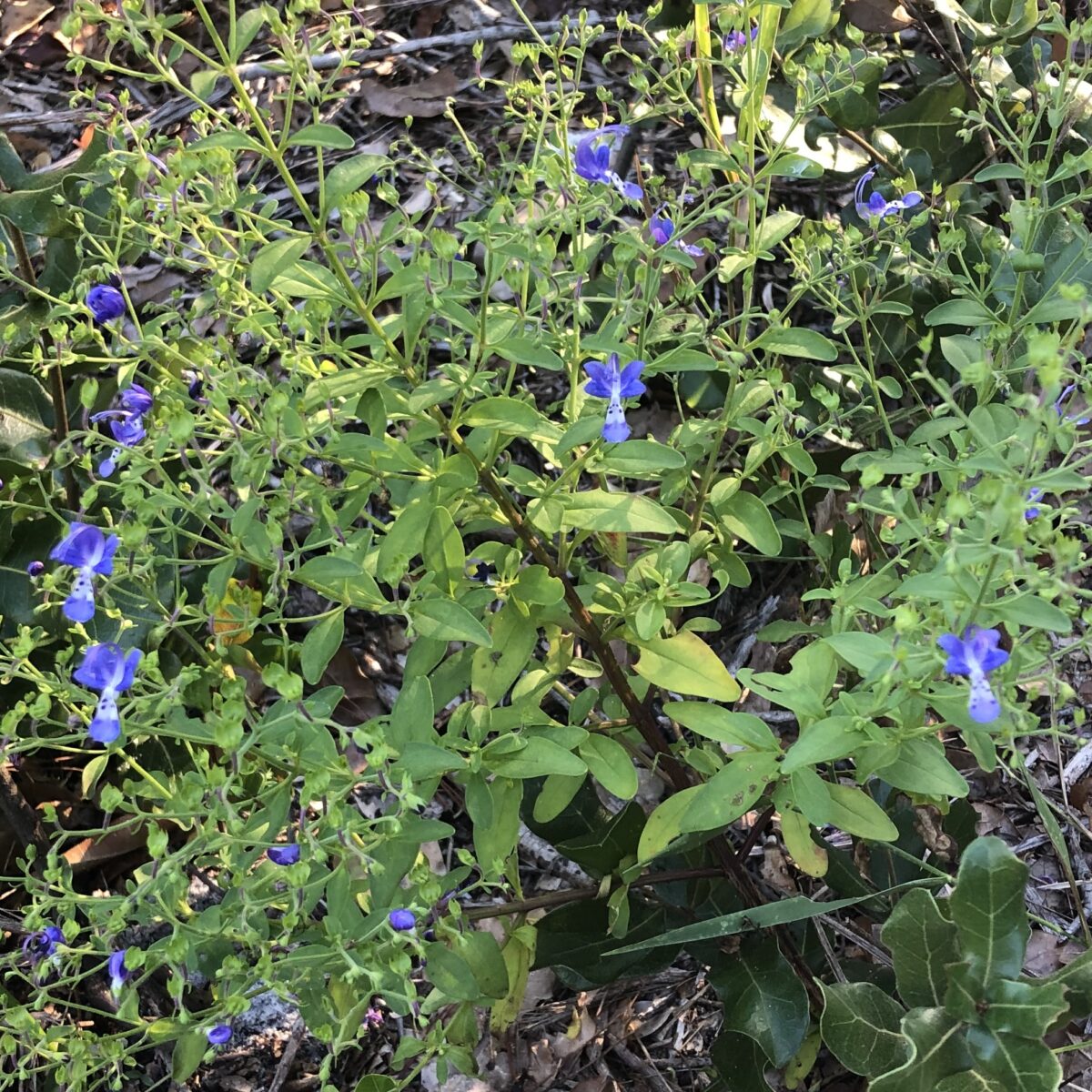
Small-leaf bluecurls (Trichostema microphyllum) — ENDEMIC
Found in Florida’s Big Bend region, this species inhabits pine sandhill and scrub.
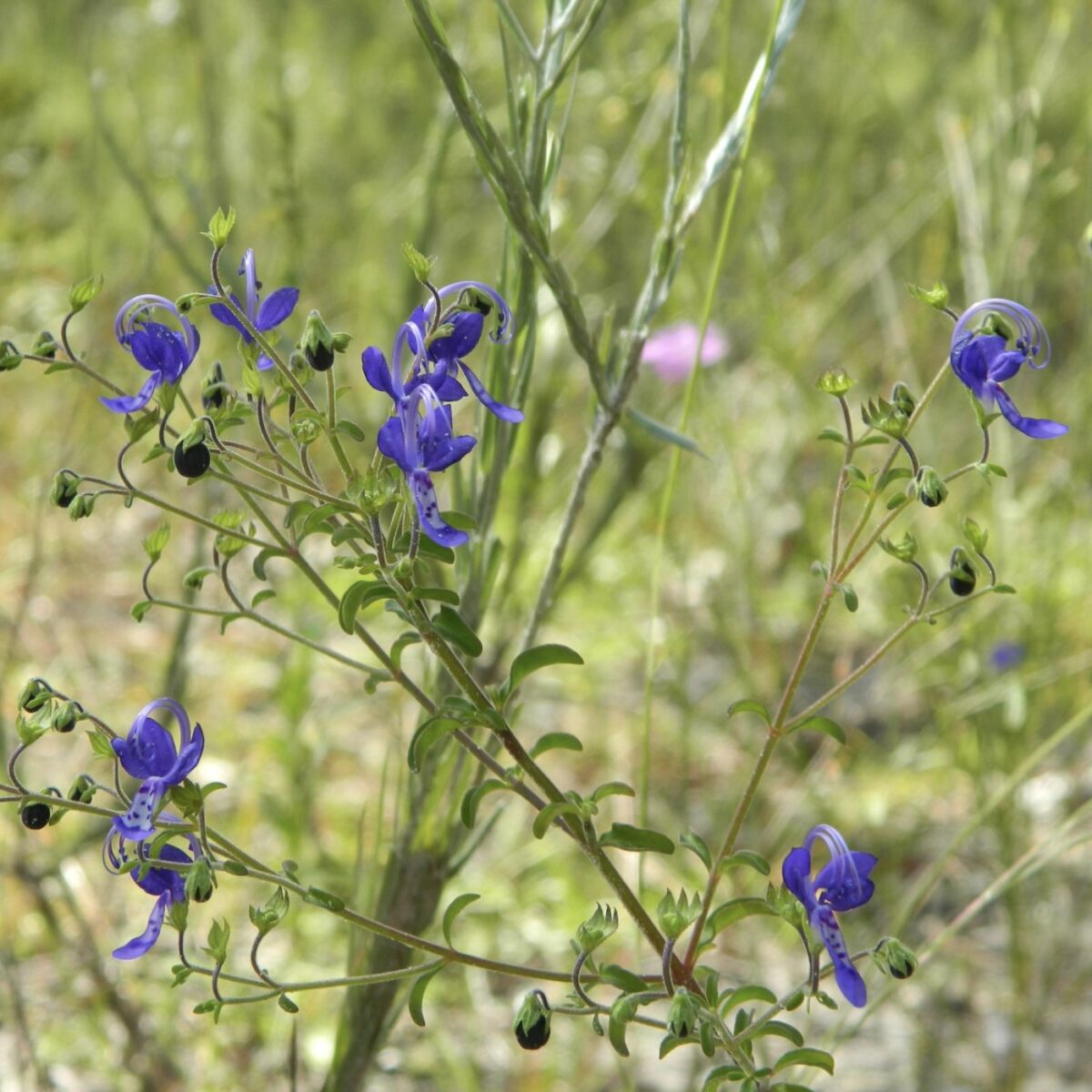
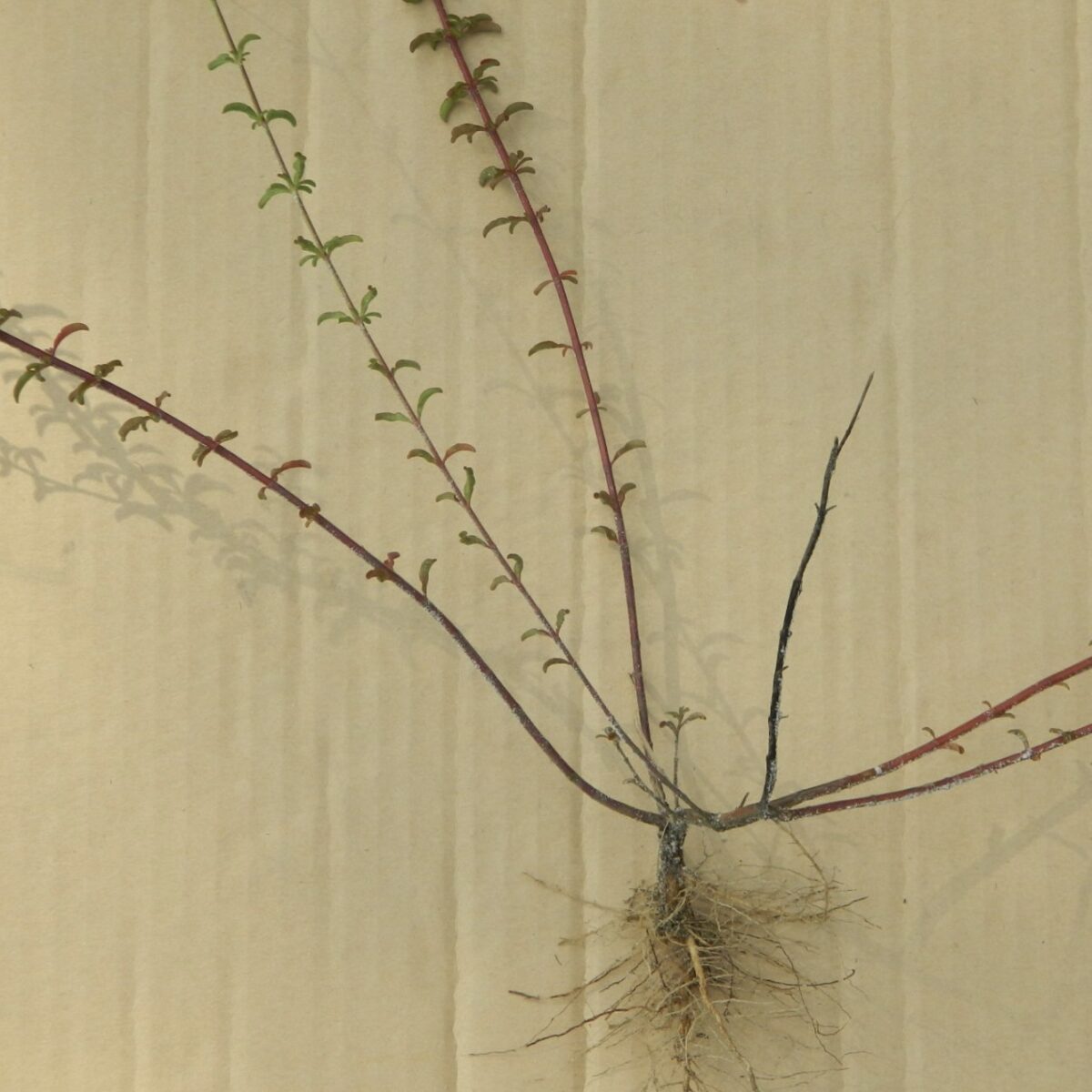
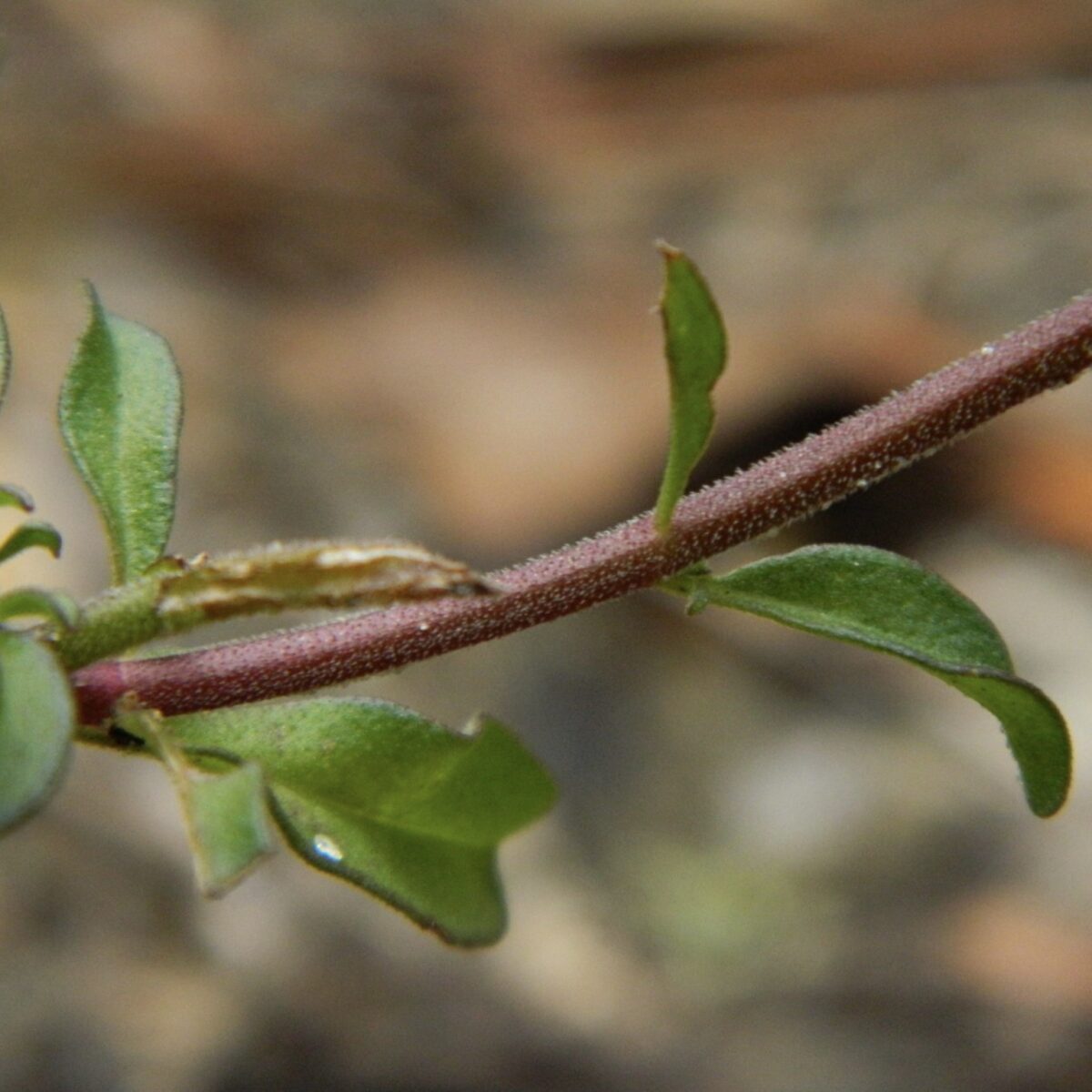
Narrowleaf bluecurls (Trichostema setaceum)
Found in the Eastern United States, this species inhabits the thin soils around rock outcroppings and habitats with dry sandy soils.
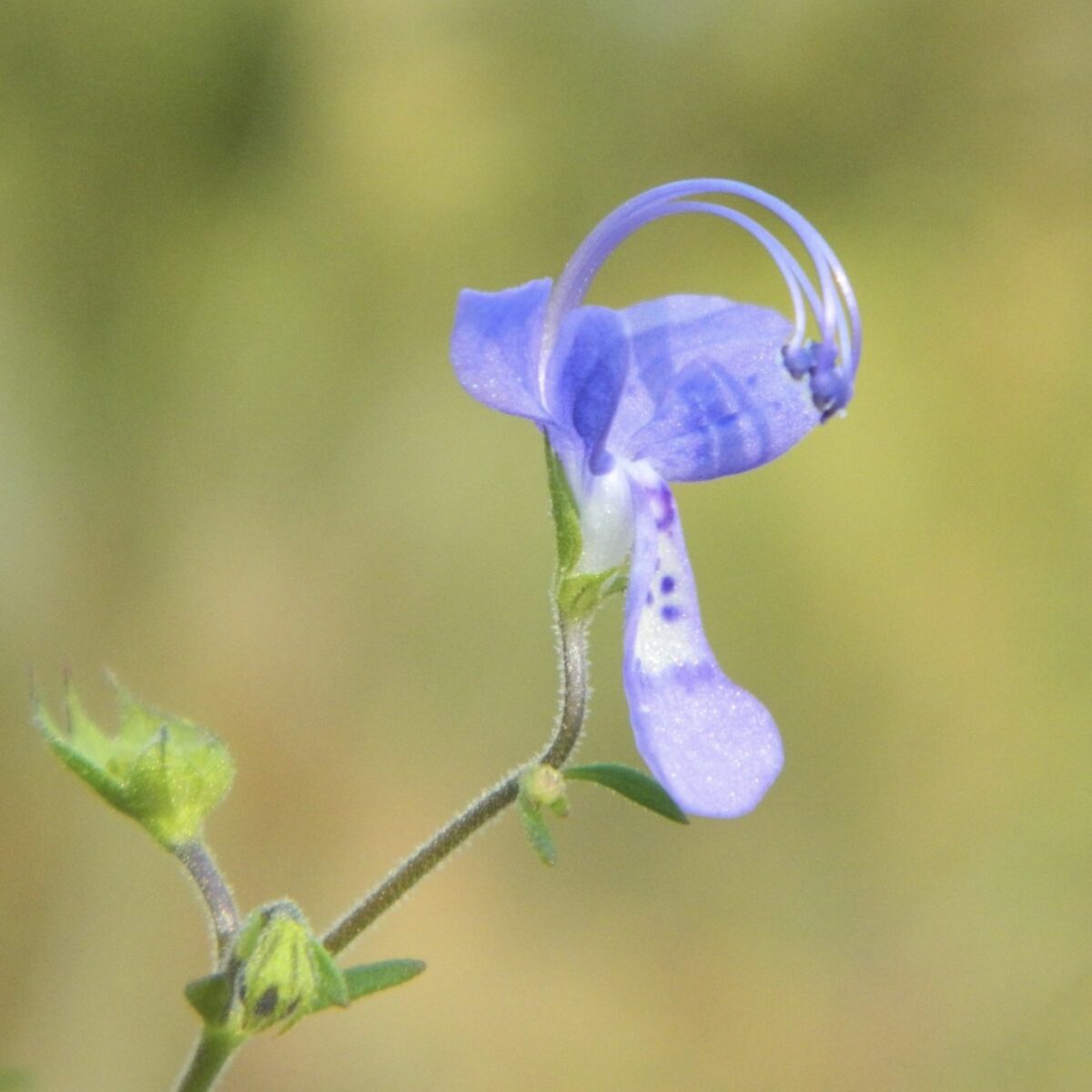
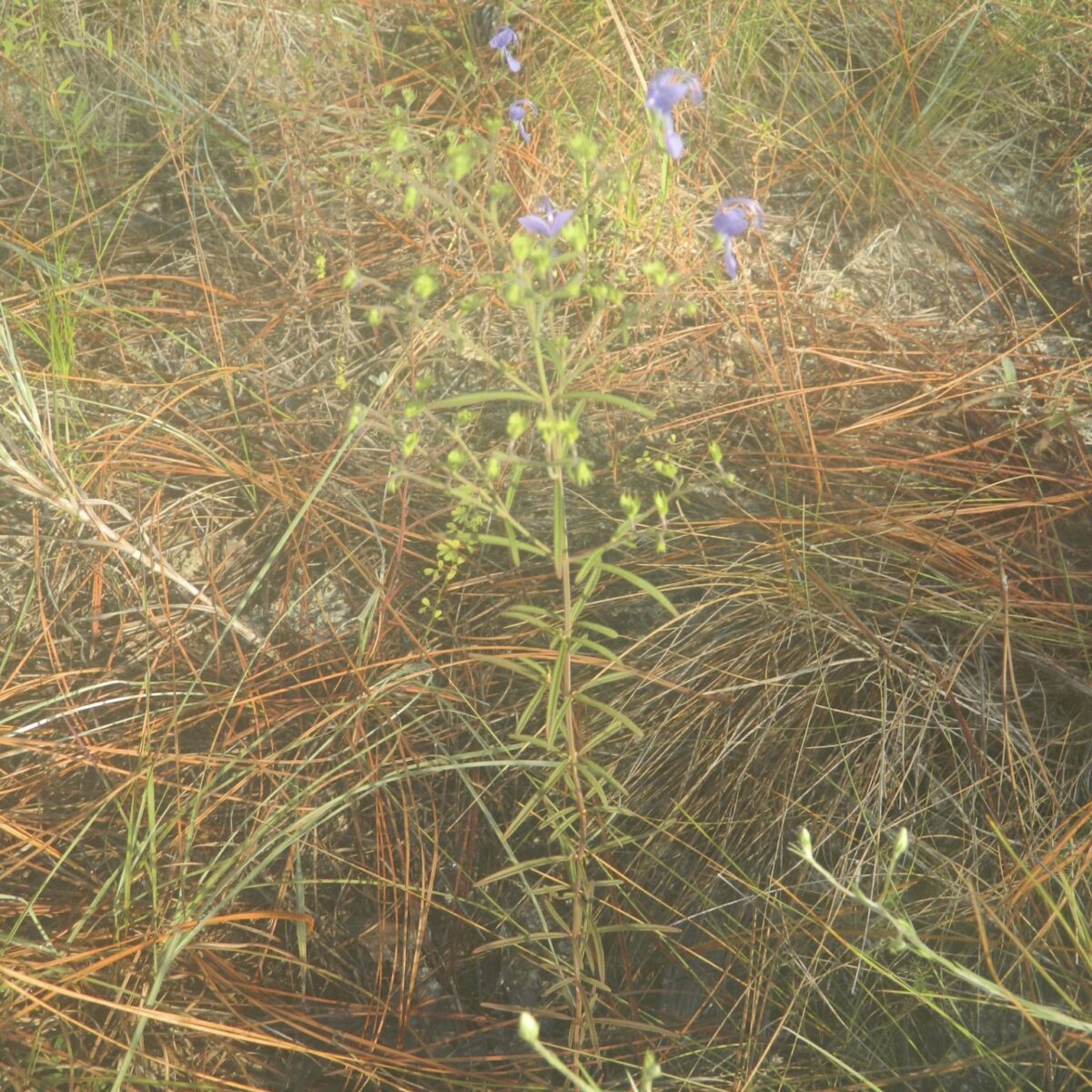
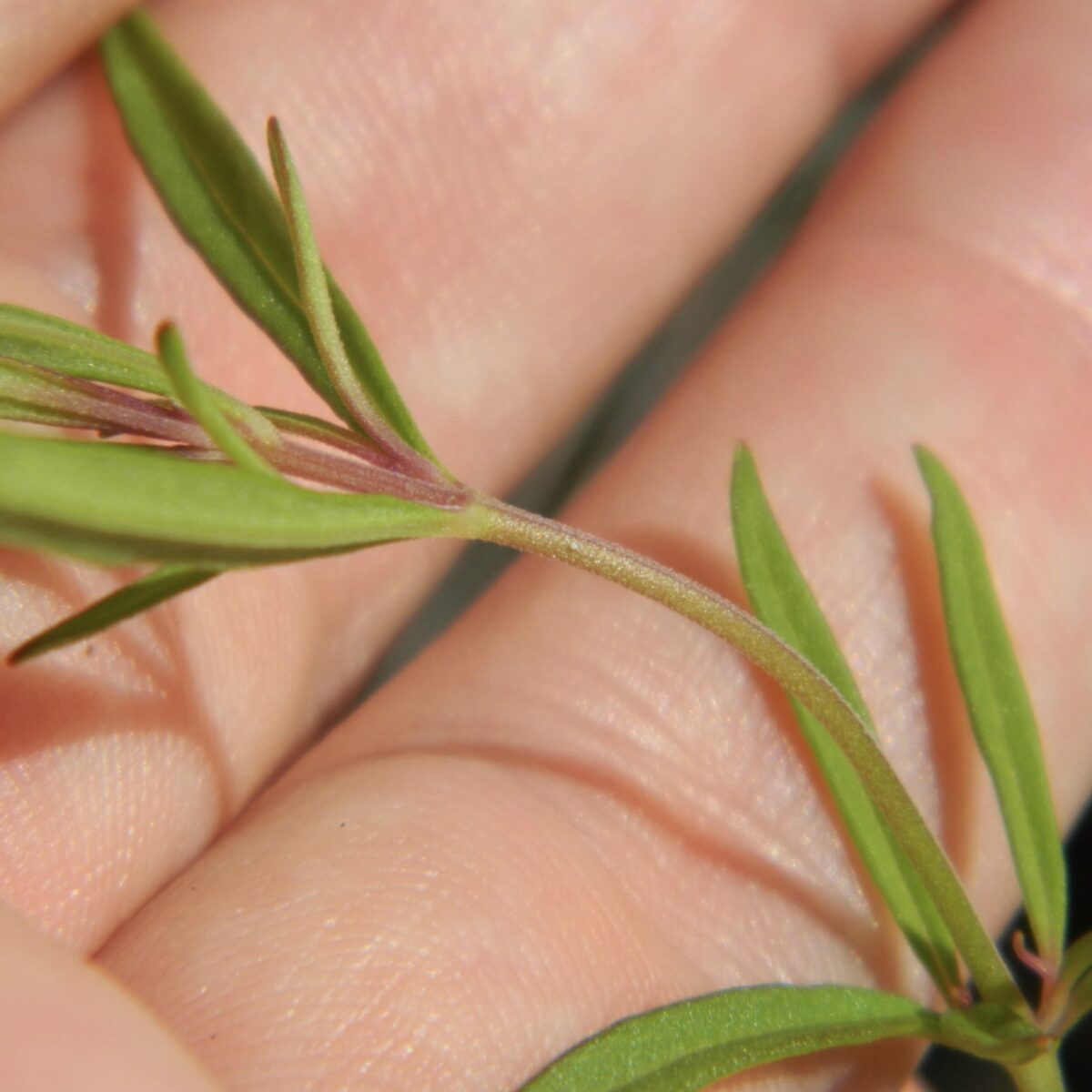
Scrub bluecurls (Trichostema suffrutescens) – ENDEMIC
Found in Northeast Florida and into peninsular Florida, this species inhabits scrub, pine flatwoods and sandhills.
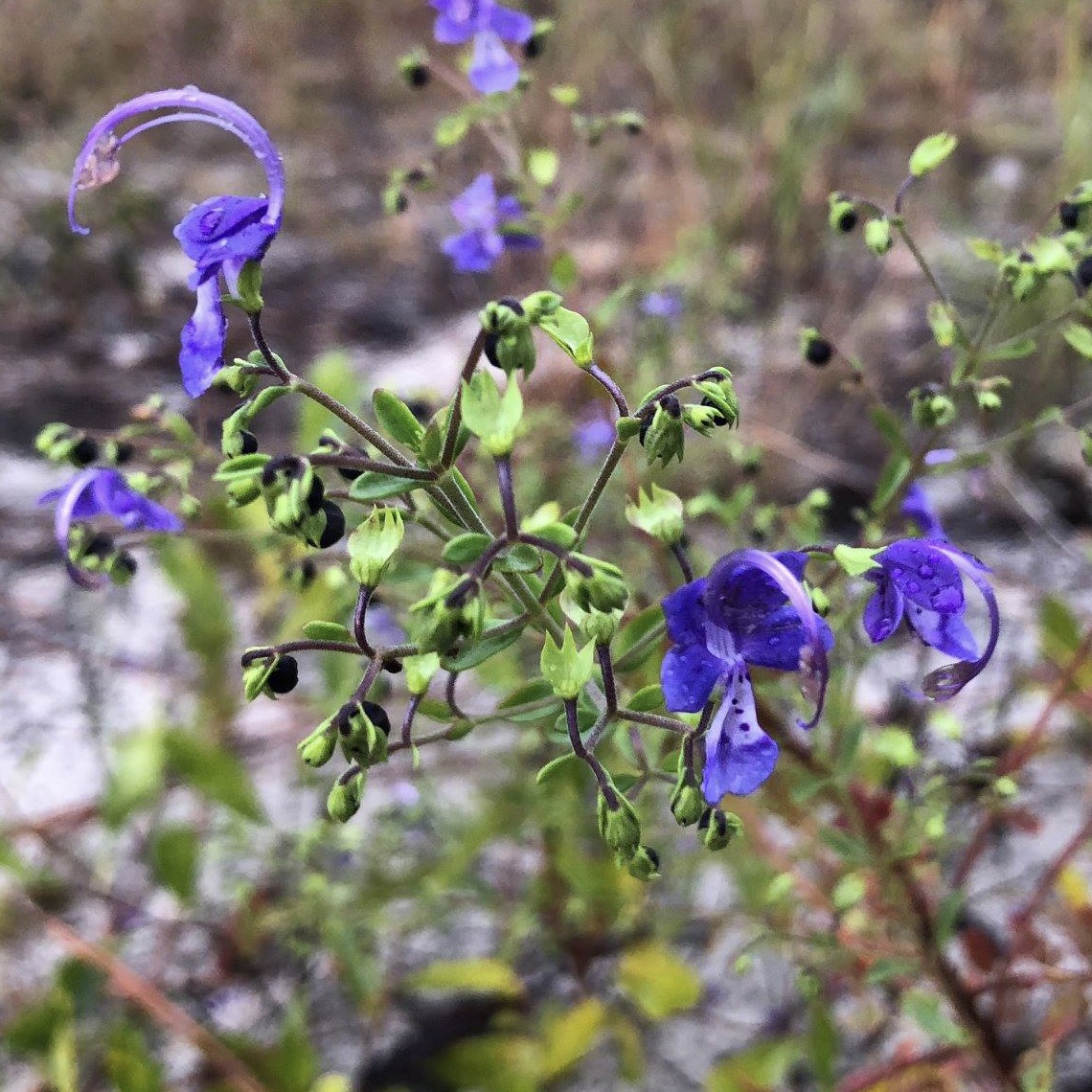
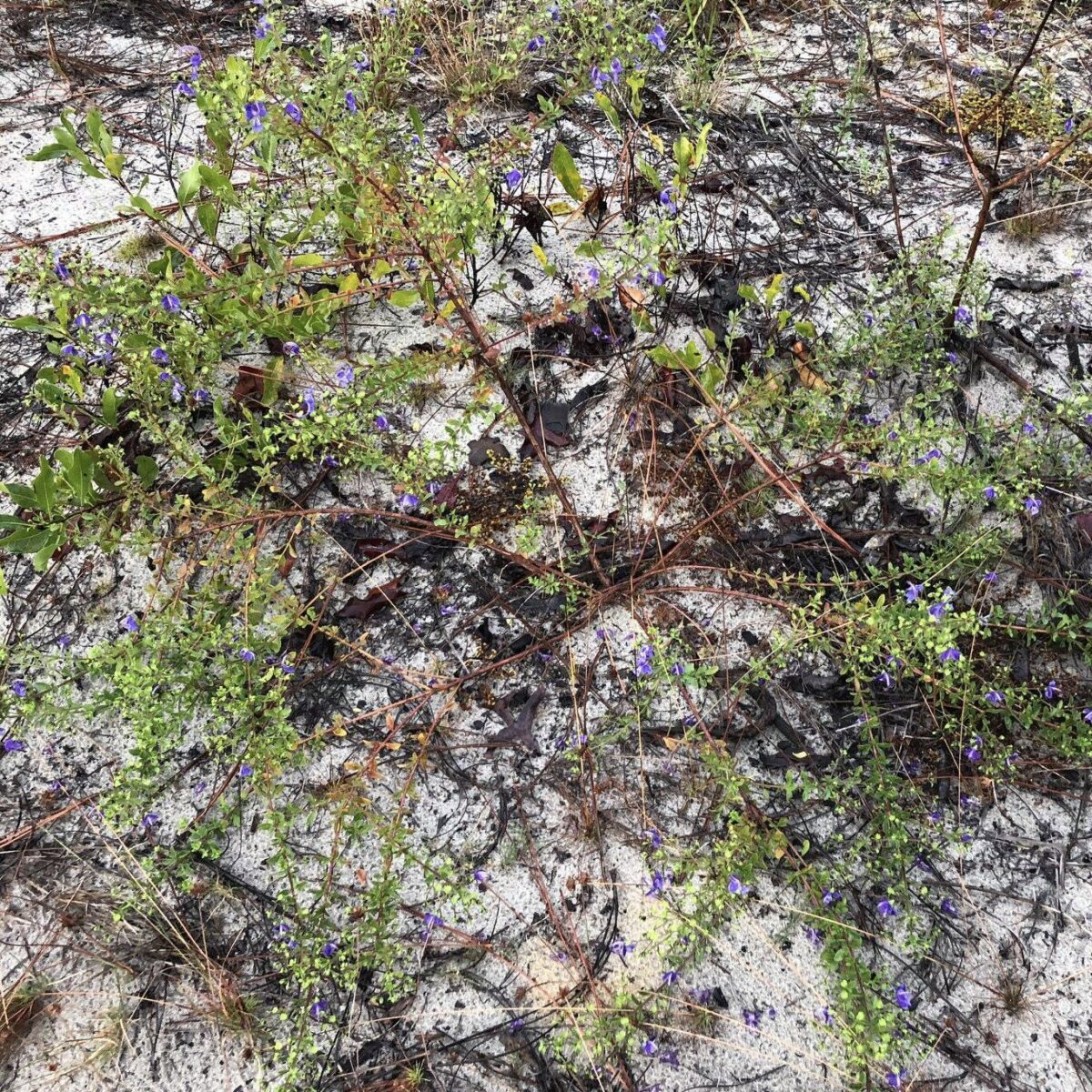
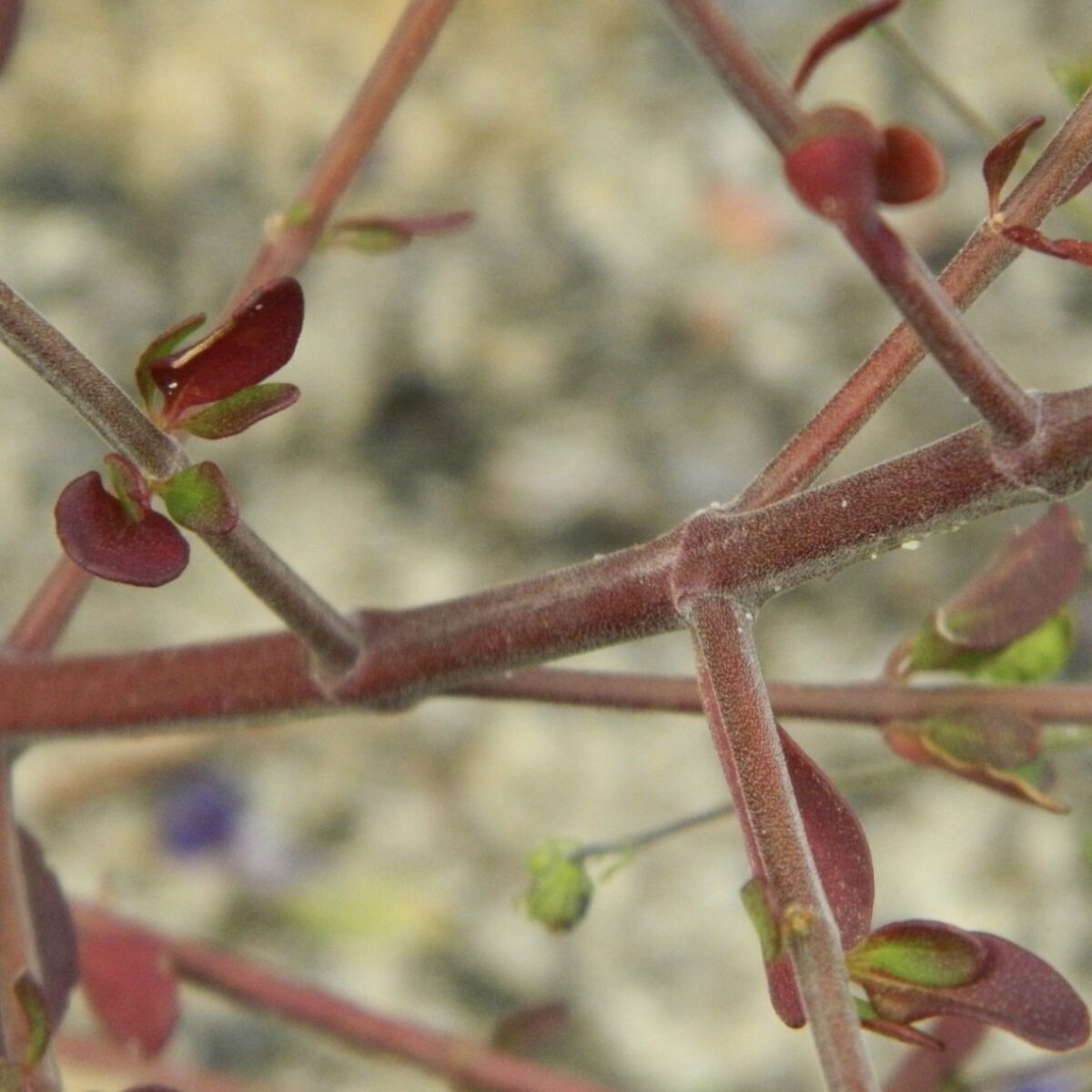
*The Flora of the Southeastern United States lists Trichostema suffrutescens as a separate species. The Atlas of Florida Plants considers it to be the same species as Trichostema dichotomum.

